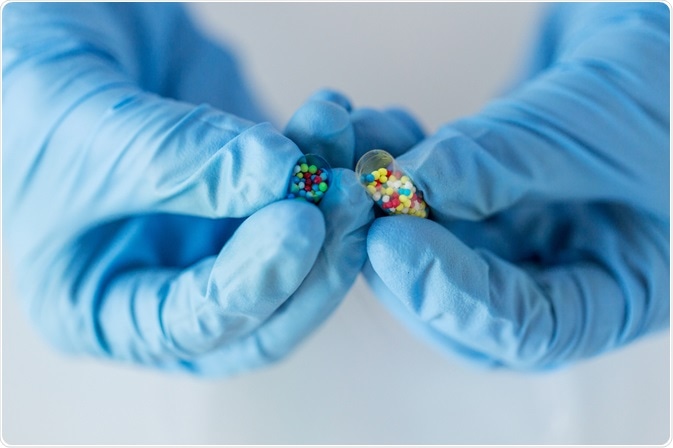Proteoforms are implicated in many types of diseases, ranging from Alzheimer’s disease to cancer. While still a young field, the knowledge of proteoform diversity and their implications in disease make them interesting targets for drug discovery and development.

Image Credit: Syda Productions/Shutterstock.com
What are proteoforms?
Proteoform is the term used to denote variation in proteins that can arise from genetic variation, RNA splicing or mutation, translational mistakes, or post-translational modifications. The differences caused by any or all of these processes can have effects on protein function and localization, which in turn can have serious system-level effects.
Proteoforms are highly relevant to drug discovery because of their active role in both healthy and diseased tissue. Proteoforms are measured by top-down mass spectrometry, which can detect the entire undigested proteoform. However, the complicated approach makes it unfeasible to profile many hundreds of proteoforms that can be candidates for disease biomarkers.
Proteoforms in biomarker discovery
The inability to screen many hundreds of proteoforms using top-down proteomics has meant that more specialized methods have been developed. For example, to study post-translational modifications, which are a major source of proteoform diversity, enrichment-based mass spectrometry is commonly used.
For many proteoforms, the biological function of the resulting molecule is not known. To understand their role as biomarkers, many researchers prefer to determine the 3D structure of the proteoform before further analysis, to develop a hypothesis-driven approach of which proteoforms may form valuable biomarkers or drug targets.
Currently, proteoforms have been associated with diseases such as cardiovascular disease and Alzheimer’s disease. For example, 14-16 proteoforms of post-translational modification have been identified for cardiac troponin I, and 75 for amyloid-β.
These indicate that for many diseases, profiling proteoforms could be an untapped source of biomarker discovery that can aid in the detection and treatment of diseases.
Proteoforms in cancer
Proteoforms that arise from all possible stages, meaning at the genetic level, the RNA level, the translational level, and at the post-translational level, can all contribute to disease. In cancer, single nucleotide polymorphisms such as those in PTEN (phosphatase and tensin homolog) can lead to proteoforms that are tumor drivers rather than tumor suppressors.

Image Credit: crystal light/Shutterstock.com
At the RNA level, alternative splicing is the most common source of proteoforms. The most famous of these in a cancer context is P53, a tumor suppressor protein that has many different proteoforms that can improve cancer survival outcomes. Another splice variant that is implicated in cancer includes proteoform MEF2Cα2, which promotes tumor growth in rhabdomyosarcoma cells.
Proteoforms specific to certain cancers require different treatments and specialized drugs. While many hundreds of cancer proteoforms have been identified in cancers and suggested as biomarkers, only a few have clinically qualified whereas others have undetermined or insignificant biological importance. Therefore, cancer proteoforms have the potential to be valuable drug targets or biomarkers, but much of the research is currently lacking.
The interaction of proteoforms with drugs
Proteoforms can impact whether treatments are effective by affecting protein dynamics, protein binding, and metabolism. Proteoforms can make cells immune to certain drugs or can reduce the efficacy of commonly used drugs.
One example of this is the alternative splicing of RNA for BRAF. The alternative splicing affects the kinase domain, which makes it resistant to a popular BRAF inhibitor called vemurafenib that is commonly used in the treatment of many childhood cancers. Another example is alternative splicing of CD19 antigen, resulting in a proteoform that lacks exon 2 and is therefore resistant to CAR-T cell therapy.
Sources
- Lorentzian, A. et al. (2019). Origins and clinical relevance of proteoforms in pediatric malignancies. Expert Review of Proteomics. https://doi.org/10.1080/14789450.2019.1575206
- Lisitsa, A. et al. (2014). Profiling proteoforms: promising follow-up for proteomics for biomarker discovery. Expert Review of Proteomics. https://doi.org/10.1586/14789450.2014.878652
Further Reading
Last Updated: Apr 1, 2020